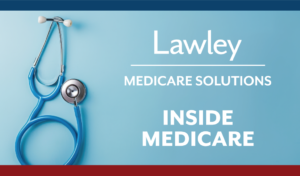Essential Health Benefits
Final Rule Issued on Essential Health Benefits
February 28, 2013
Beginning in 2014, the Affordable Care Act (ACA) requires non-grandfathered plans in the individual and small group market to offer a comprehensive package of items and services that meets certain actuarial value requirements. This comprehensive package is known as the essential health benefits (EHB) package.
On Feb. 25, 2013, the Department of Health and Human Services (HHS) released a final rule regarding ACA’s essential health benefits, actuarial value and accreditation standards.
ESSENTIAL HEALTH BENEFITS
The final rule confirms prior guidance defining EHB based on a state-specific benchmark plan and requiring all plans that cover EHB to offer benefits that are substantially equal to those offered by the benchmark plan.
ACA’s essential health benefits requirement applies to non-grandfathered plans offered in the individual and small group markets, both inside and outside of the Exchanges. Self-insured group health plans, health insurance coverage offered in the large group market and grandfathered plans are not required to cover essential health benefits.
ACA requires the EHB package to be equal in scope to the benefits covered by a typical employer plan. Additionally, the EHB package must include items and services within at least the following 10 general categories:
- Ambulatory patient services;
- Emergency services;
- Hospitalization;
- Maternity and newborn care;
- Mental health and substance use disorder benefits, including behavioral health treatment;
- Prescription drugs;
- Rehabilitative and habilitative services and devices;
- Laboratory services;
- Preventive and wellness services and chronic disease management; and
- Pediatric services, including oral and vision care.
The final rule adopts the benchmark approach for defining EHB. Under this approach, each state can select a benchmark insurance plan that reflects the scope of services offered by a typical employer plan in the state from among the following options:
- The largest plan by enrollment in any of the three largest products by enrollment in the state’s small group market;
- Any of the largest three state employee health benefit plans by enrollment;
- Any of the largest three national Federal Employees Health Benefits Program (FEHBP) plan options by enrollment; or
- The largest insured commercial non-Medicaid health maintenance organization (HMO) in the state.
According to HHS, 26 states have selected their benchmark plan. In states that did not make a selection, the final rule confirms that HHS will select the largest plan by enrollment in the largest product by enrollment in the state’s small group market as the default benchmark plan.
If a state’s benchmark plan is missing any of the 10 categories of benefits, the final rule provides guidance on how the state (or HHS where the default benchmark plan applies) will supplement the benchmark plan in that category. The final rule also includes a number of standards to protect consumers against discrimination and ensure that benchmark plans offer a full array of EHB benefits and services. For example, the final rule:
- Prohibits discriminatory benefit designs;
- Includes special standards and options for health plans for benefits not typically covered by individual and small group policies today, including habilitative services; and
- Includes standards for prescription drug coverage to ensure that individuals have access to needed prescription medications.
More information on the benchmark plans, including the benchmark plan for each state, can be found on the Center for Consumer Information & Insurance Oversight (CCIIO) website.
USE THIS LINK TO DOWNLOAD THE PDF OF THIS BRIEF






